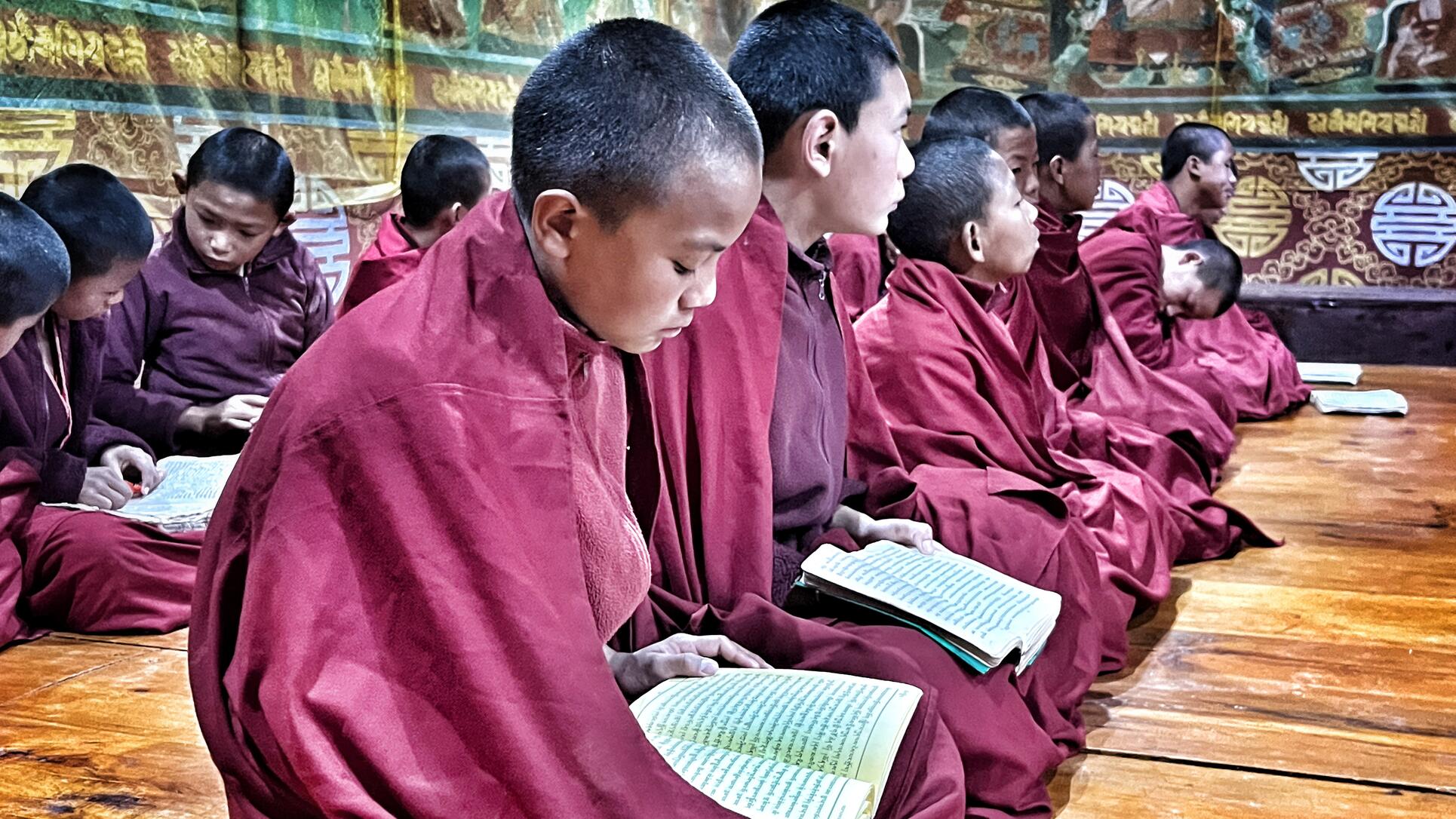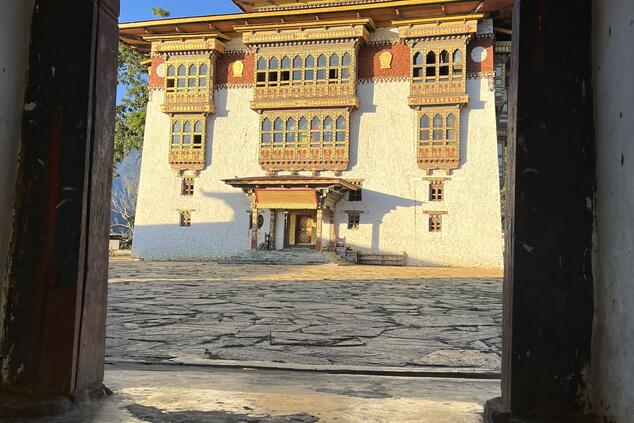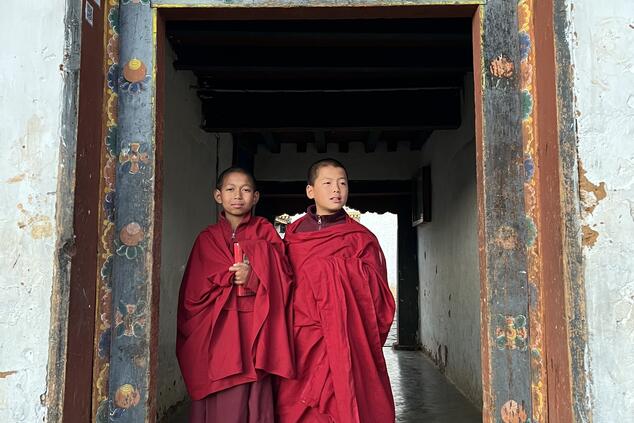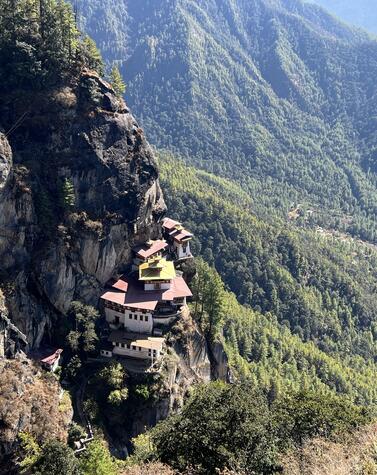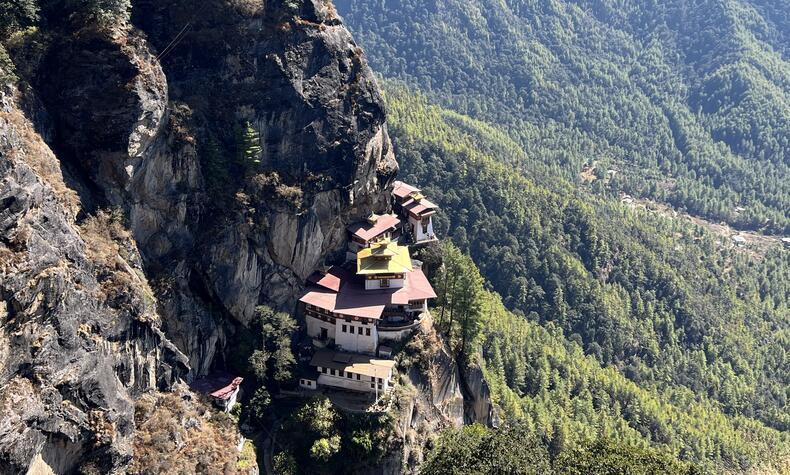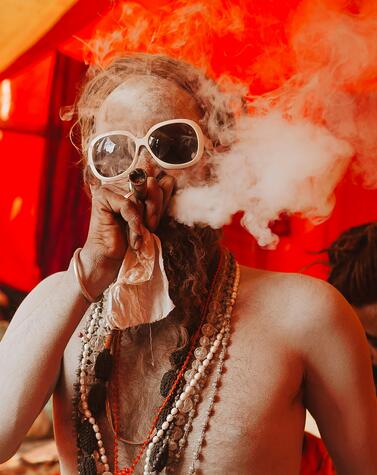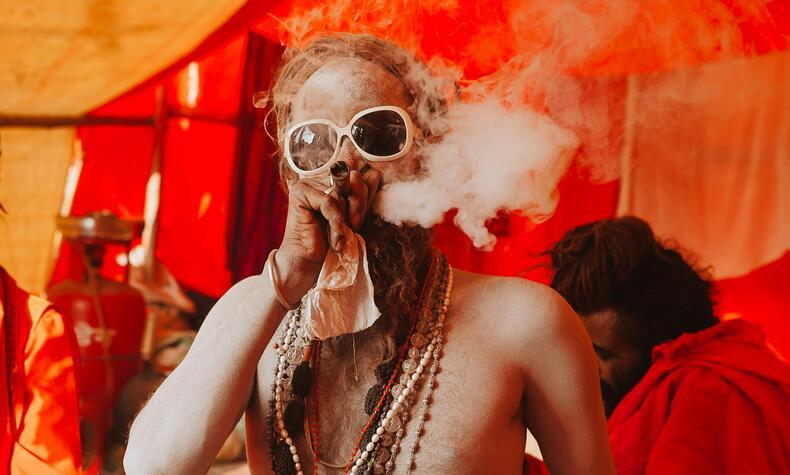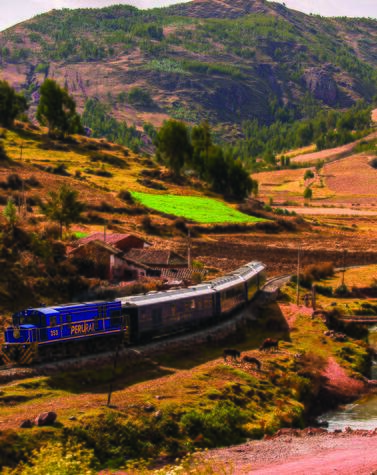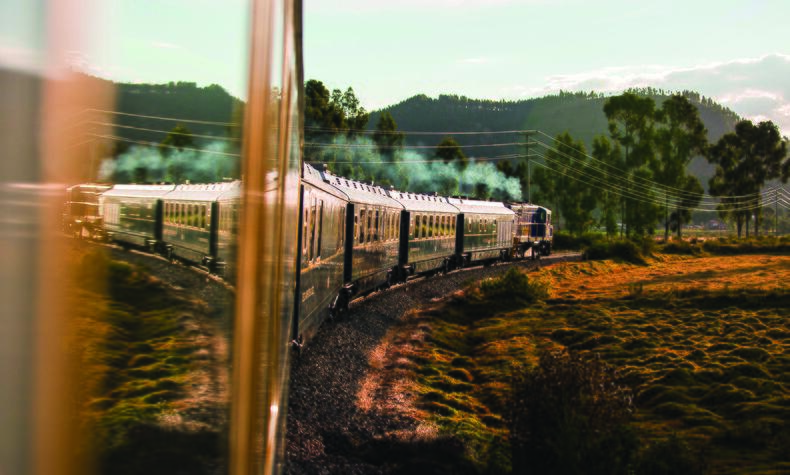Bhutan Monasteries: Guardians of Spirituality in the Himalayas
In the rugged valleys of the Himalayas, Bhutan stands as a bastion of spirituality and Buddhist traditions. In this small kingdom, where national happiness takes precedence over economic growth, monasteries are much more than religious centers, they are the cultural and educational soul of the nation. These institutions, known as lhakhangs or dzongs (temple-fortresses), have shaped generations, preserving the delicate balance between the modern and the ancestral that defines Bhutan. The first thing a traveler notices is how Buddhism is present in every corner, from the countless stupas to the impressive dzongs, and in the constant coming and going of monks, many of whom are children. One cannot help but wonder how all these young people end up in the monasteries instead of with their families or at school.
Since its foundation in the 17th century, monasteries in Bhutan have served as centers of learning and guardians of Vajrayana Buddhism. These institutions are not only places of prayer but also function as boarding schools, where thousands of children receive spiritual and academic education from the age of five. The monastic education system was the only one in existence until the mid-20th century. Today, the monasteries continue to operate as boarding schools, accommodating thousands of young people who receive a spiritual education based on Buddhist philosophy, meditation, and rituals, while secular schools teach subjects like mathematics, sciences, and languages. Approximately 50% of the country's youth are educated in monasteries, while the other 50% attend secular schools. Each of these two often opposing worlds reflects the delicate balance between modernization and traditions that Bhutan faces. Monastic life follows an austere rhythm. The young residents, who are not considered monks until they reach adulthood, face very basic living conditions. They sleep in shared cells on mats, without heating, and dedicate much of the day to spiritual activities and communal tasks. Although UNICEF and other organizations have tried to improve their living conditions, deeply rooted tradition prevails.
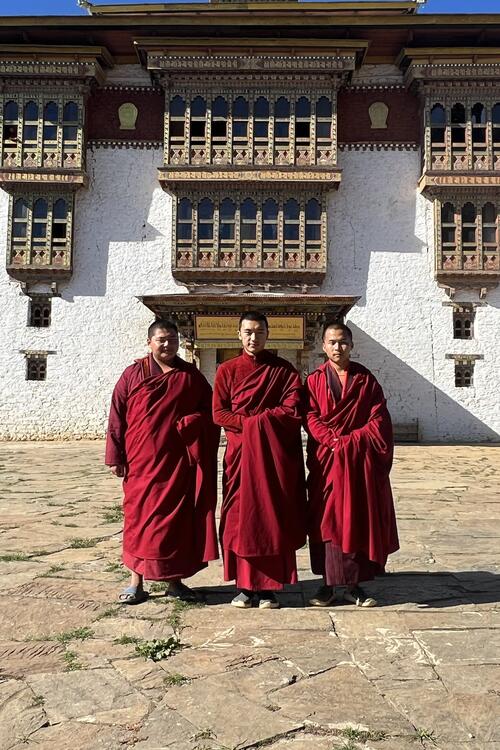
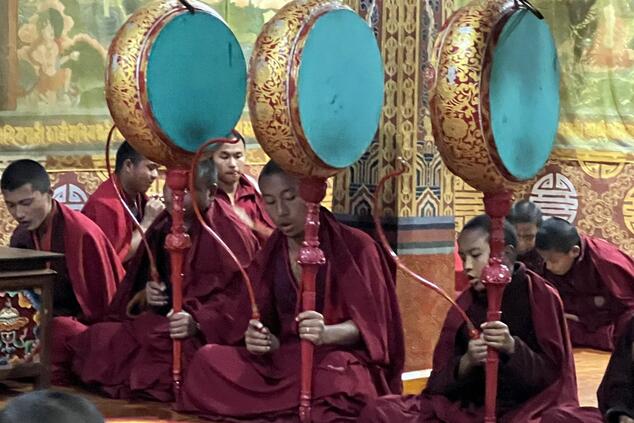
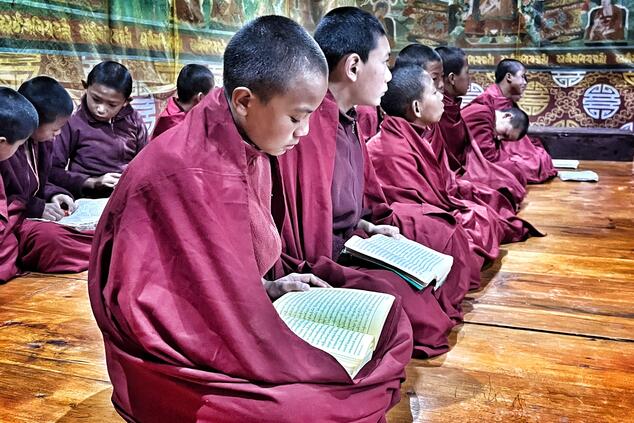
The day at a monastery begins before dawn, at five in the morning, when the sound of huge ceremonial trumpets and drums marks the start of morning prayers. These collective meditations, carried out in large rooms lit by oil lamps and neon tubes, are the spiritual focus of the day. After the prayers, the young monks immerse themselves in the study of Buddhist scriptures, memorizing texts that they will have to recite from memory in their exams. It is a constant balance between discipline and devotion. Breakfast, served around nine in the morning, consists of rice with vegetables and butter tea, reflecting the simple yet nutritious diet of the monks. During the day, activities are divided between English, math, and science classes, albeit with a primarily religious focus, in addition to other religious practices such as playing ceremonial instruments or preparing altars. Between classes, everyone washes their clothes, and despite the austerity, the young monks find time for soccer, a passion that contrasts with the rigor of their training. At sunset, evening prayers close the daily cycle, enveloping the monastery in an atmosphere of peace and reflection. This way of life, although challenging, shapes the young monks both spiritually and emotionally, teaching them resilience, discipline, and empathy.
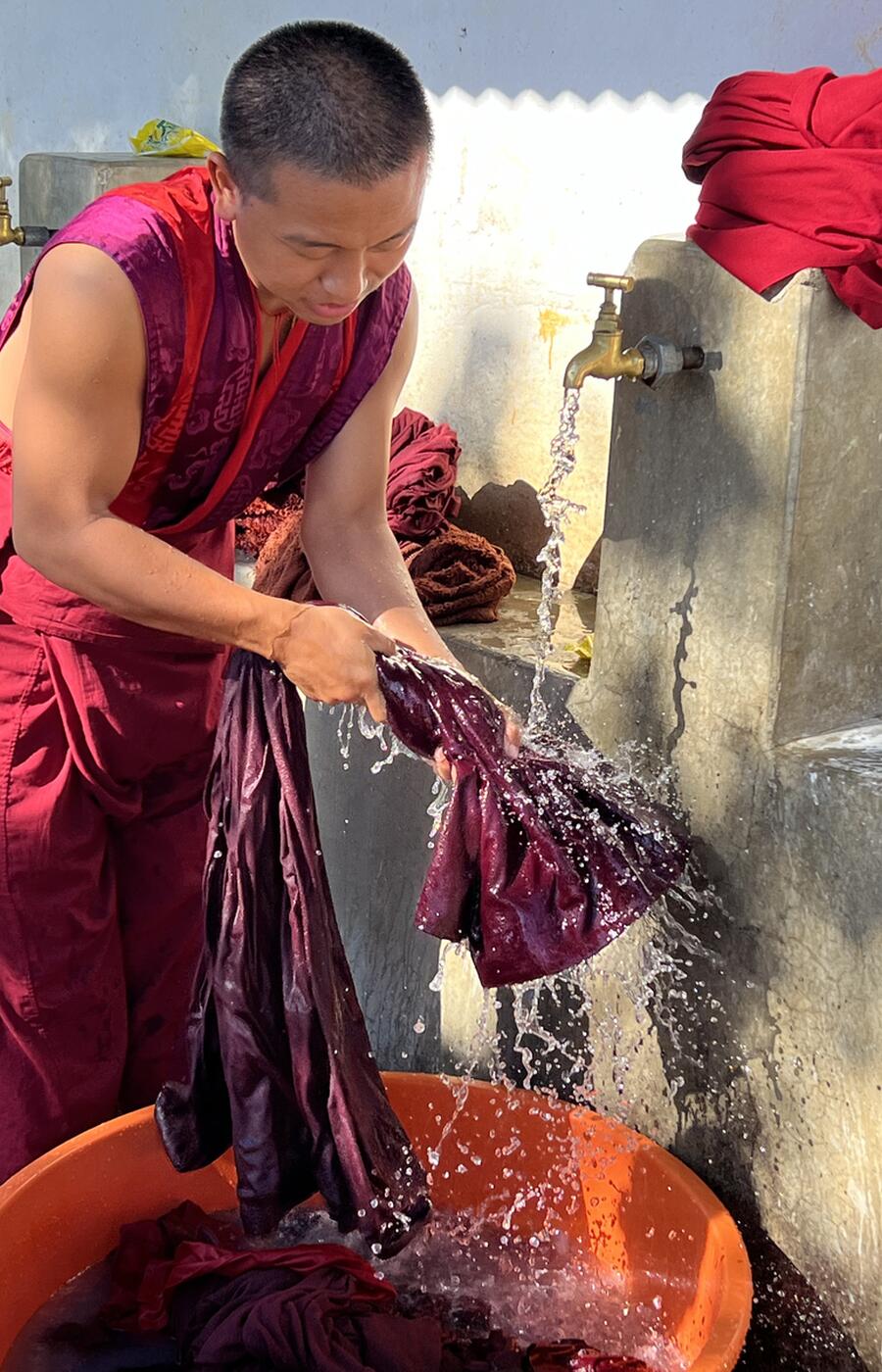
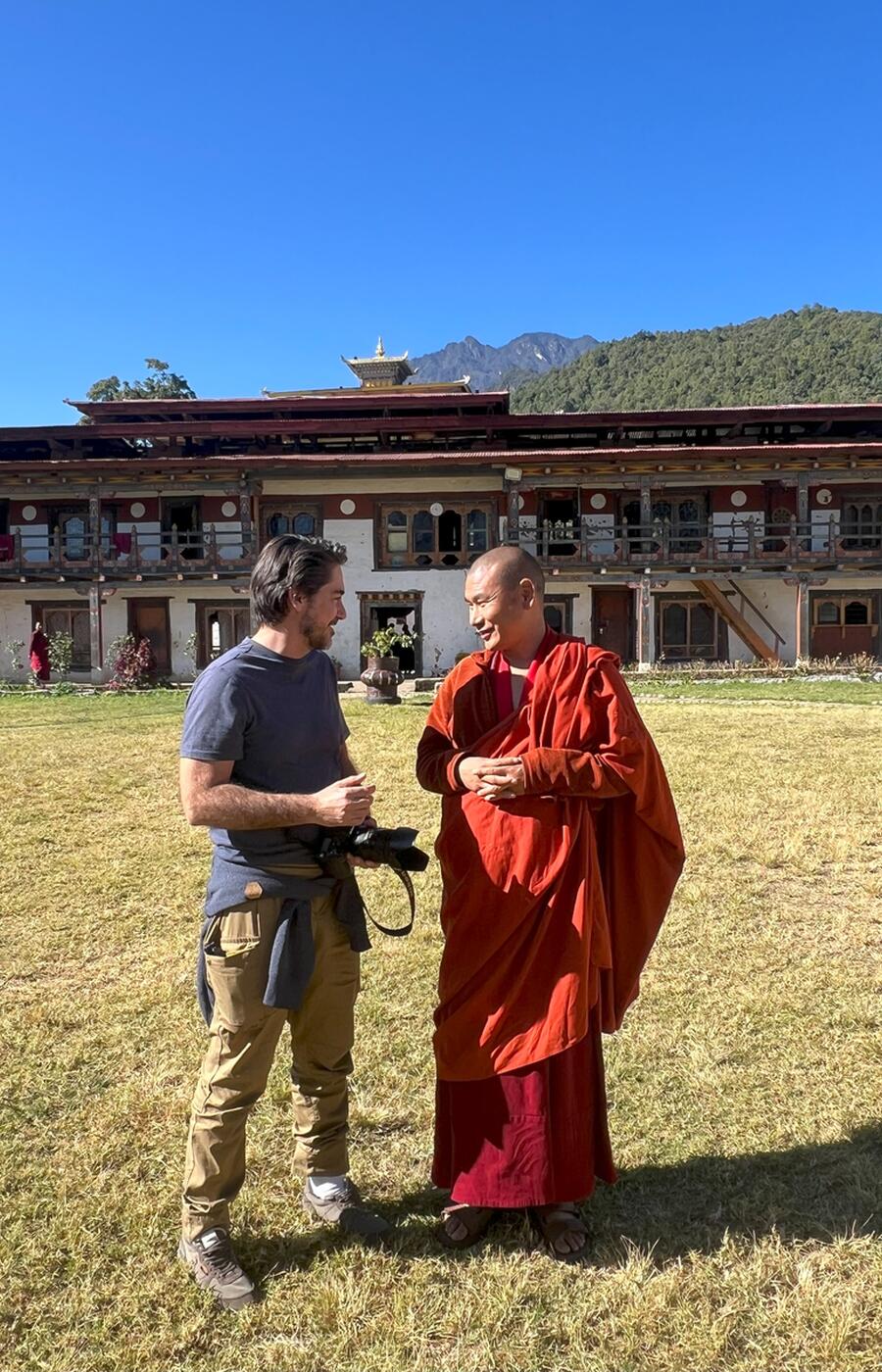
- The monasteries of Bhutan are spiritual and cultural guardians, preserving ancient traditions while adapting to modern times. —
- These monastic institutions not only teach Buddhism, but are also the core of Bhutan's cultural identity. —
- The Chorten Nyingpo Lhakhang where we conducted this report, in the province of Punakha. —
- In Bhutanese monasteries, young people learn to balance their spiritual life with the challenges of a globalized world.
At 18, students face a crossroads: deciding whether to continue with their monastic life or return to the secular world. For those who choose to stay, the transition includes a one-year retreat in complete solitude. During this period, the aspirants live in remote caves or huts, receiving food from their families without direct or visual contact with them. This retreat is both a test of faith and a symbol of the spiritual commitment necessary to become monks. This process not only strengthens the bond between the youth and their faith but also ensures that those who choose the monastic life do so with full conviction, preserving the purity and purpose of these monastic communities.
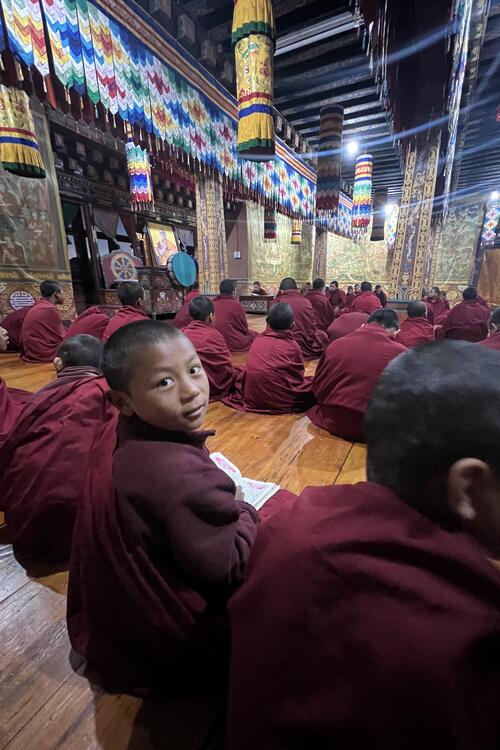
In the context of a society striving to balance its spiritual heritage with the challenges of the 21st century, Bhutanese monasteries play a fundamental role. While modern schools prepare students for a globalized world, the monasteries remain the guardians of Bhutan's cultural and spiritual identity. Here, the younger generations learn not only about their religion but also about the value of community and the importance of living in harmony with their environment.
As Bhutan opens up to tourism and adjusts to a globalized world, the conservation of its monasteries and monastic way of life becomes increasingly crucial. These institutions not only serve as spiritual refuges, but also as tangible reminders of the country's cultural resilience. At a time when many nations struggle to maintain their traditions in the face of change, Bhutan offers an example of how modernity and spirituality can coexist in a relatively harmonious way. The monasteries in Bhutan represent much more than imposing buildings or tourist destinations: they are the soul of a nation that has managed to preserve its identity in a constantly changing world. By exploring its educational system, spiritual practices, and role in society, Bhutan's profound commitment to a future that honors both its traditions and modernization is revealed.
